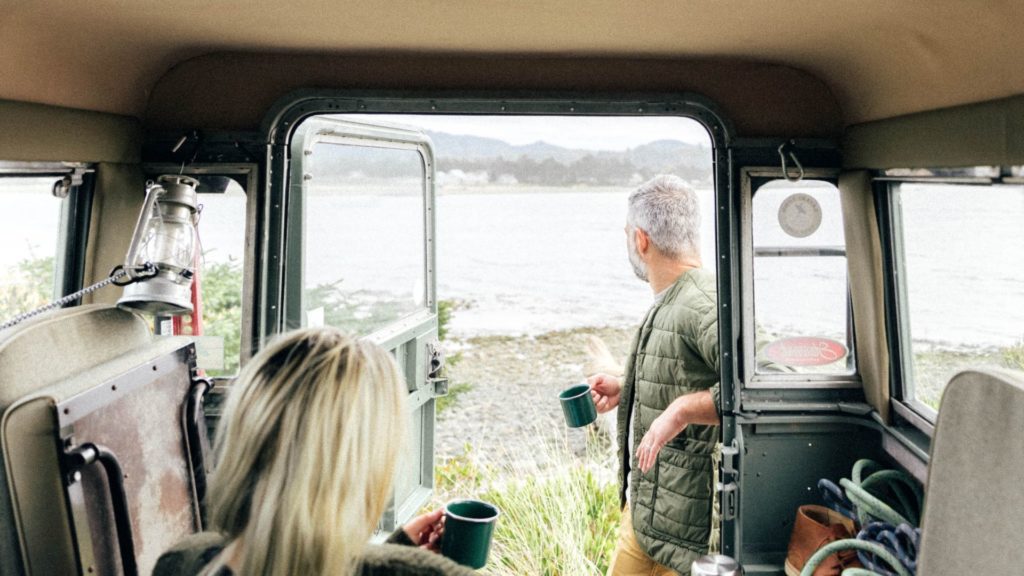From record-breaking temperatures and shrinking ice sheets to increased frequency of natural disasters like hurricanes and wildfires, it’s clear that climate change has taken a hold of our daily lives. And while we can all do our part in a variety of ways — reduce food and water waste, eat more plant-based ingredients, bike or walk instead of drive — did you know that the most impactful thing we can do as a collective is plant more trees?
Studies have shown that reforestation is one of the most effective tools in mitigating the climate crisis. Planting trees in damaged areas can drastically reduce harmful CO2 emissions thanks to a tree’s incredible carbon-capturing capabilities. But trees also help protect fertile land, maintain healthy biodiversity, and create opportunities in communities.
We launched One Tree Planted to make it easier for individuals and businesses to support reforestation efforts around the world. And through our partnership with SCP, you — yes, you! — are making it happen. Through their Every Stay Does Good project, when you stay at one of their hotels, SCP donates the estimated cost to plant a tree. That means as you’re nourishing your health with a spa treatment on the Oregon Coast or hiking in Colorado Springs, you’re nourishing the health of the planet, too.
Here, we break down how reforestation works, the ways we collaborate with local communities, and why we’re working towards replanting 1 billion hectares of new forest.
The Rewards of Reforestation
Trees give us a lot. They provide us with clean air and water, can grow nutrient-dense food, and improve our health (hello, forest bathing!). But they also sequester carbon that would otherwise increase greenhouse gas emissions and in turn, accelerate climate change. In fact, 15-40% of CO2 emitted because of human actions can stay in the atmosphere for up to 1,000 years — even tens of thousands of years.
But this is where trees work their magic. When they exercise photosynthesis, they draw CO2 from the air, bind it into sugar (used to grow wood, branches, and roots), and then release oxygen. When you take down huge forests, though, we’re back to square one. Deforestation, caused by wildfires, agricultural use, or the logging industry, has significantly reduced the percentage of forests on our planet. Industrial agriculture alone accounts for losing about 5 million hectares — the size of Costa Rica — every year. Another not-so-fun fact? Deforestation has spurred nearly 30% of all CO2 emissions since 1850.
But the other thing about trees is that they’re resilient. Under the right conditions, they bounce back and give us those benefits all over again. That’s why making careful and strategic decisions about where to replant can result in a lush, carbon-capturing forest for years to come.
Replanting Requires Research
It’s not so simple as getting trees, digging holes, and watering. At One Tree Planted, we consider the environmental, social, and economic needs of an area first, ensuring that the forest makes sense for the land and community. Once we’ve finalized a perfect location, we choose a tree species — usually a native variety to mimic natural regeneration — and a planting method that follows local standards. Then our organization works with a community nursery plus local volunteers and professionals to get to work. It doesn’t end there — that tree needs to be monitored to make sure it thrives, which means job opportunities for locals who can ensure its success.
Take our Sumatra, Indonesia mission. We teamed up with the Rainforest Alliance to plant 124,041 trees, picking species that aligned with the area’s tropical, hilly terrain and would help diversify the local economy. That meant fruit trees like avocado, durian, and mangosteen, as well as non-timber forest products like bamboo that can be sold by local farmers. We also planted native trees in the area’s important rainforests that had been logged for paper pulp and palm oil plantations. By restoring this region, we were able to protect a crucial habitat for plants and wildlife, including critically endangered Sumatran orangutans and some of the last remaining Sumatran rhinos left on Earth.
How Many Trees Do We Need?
Climate change has already devastated so many people, places, and animals. This much damage calls for a drastic solution. And according to the Intergovernmental Panel on Climate Change, we need 1 billion hectares of forest to limit global warming to 1.5°C by 2050. Enter: The 1 Trillion Tree Campaign, which was announced at the 2020 World Economic Forum. This platform provides financing and resources for governments, businesses, and civil societies to help implement habitation restoration projects and get to that 1 trillion milestone as a global community by 2030.
The United States, Canada, Australia, Brazil, China, and Russia are some of the countries with the most land available for replanting. As they grow, these forests draw down carbon, rejuvenate degraded soil, provide hydrological and air quality benefits, and create jobs and income for local communities. In other words, a forest is as much a member of a community as its people. And through reforestation, we can support the health and vitality of these regions for generations to come.
That’s why we love SCP’s mantra of holistic hospitality. Together, we’re making it easier for you to give back. When you’re on the trails, scoping out ocean views, or lounging on their rooftop with a cocktail in hand, your stay is making the world a healthier, kinder, and greener place — one tree at a time.




